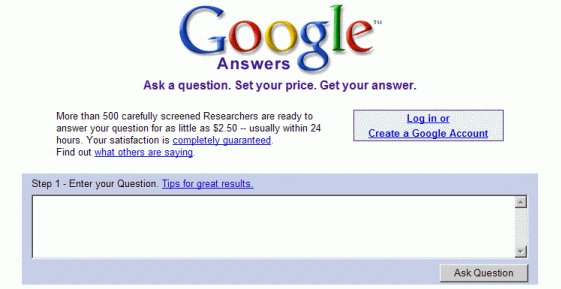Being popular helps mask your mistakes
Google may be seen as top of its game but it has launched some real failures too.
I was having a discussion about us Brits, how we always knock success and act with jealousy, I told the story that in the US someone going past in a swanky car would get the “Next year that’ll be me” comment but in the UK its “Why does a bastard Ba****d like that get such a swanky car, and not me, that’s not fair”.
We just have a different view on life and don’t accept that’s a. its not fair and b. you have to work for success. Maybe that’s why we have such a poor youth employment record compared to other countries.
So this got me thinking, there is usually a love hate with Brands, at the moment everyone has a go at Blackberry and Microsoft, years ago it was IBM and Lotus, now Apple and Google can do no wrong – or can thay?
Everyone loves Google, except for those pesky funny looking street view cars a few years ago but do you realise that Goggle has had many failures along the way?
1. Google Answers Google Answers was Google’s marketplace for knowledge. Users posted a question and the amount they were willing to pay for an answer, and then researchers would answer the question. The community was too small and the service could never compete with Yahoo’s answers service.
Google Answers was Google’s marketplace for knowledge. Users posted a question and the amount they were willing to pay for an answer, and then researchers would answer the question. The community was too small and the service could never compete with Yahoo’s answers service.
2. Google Buzz
Google Buzz was a social platform for sharing content that was incorporated into Gmail. Buzz met heavy criticism and raised numerous privacy issues among users. It was discontinued in December 2011.
3. Google Latitude

Google Latitude was a location-based app that allowed users to find some of their Gmail contacts by proximity. It failed mostly because it was creepy.
4. Nexus Q
The Nexus Q was Google’s multimedia player challenge to the Apple TV. The problem was that the product was $300 and it didn’t really do much. At least it looked cool.
5. Google Wave
Google Wave was a classic case of “over promise, under deliver.” Google touted it in glowing terms at launch, but it never really lived up to the hype. The product was confusing and it didn’t really have a clear value proposition.
6. Google TV
Google TV was a smart TV platform launched in 2010. The implementation was clumsy and the products were not well-received. It’s rumoured that Google TV could be re branded as Android TV.
7. iGoogle

iGoogle allowed users to created a customisable homepage with widgets such as weather and content feeds. The company initially announced they would migrate the social features in 2012.
“With our new focus on Google+, we will remove iGoogle’s social features on January 15, 2012. iGoogle itself, and non-social iGoogle applications, will stay as they are,” said Bradley Horowitz, then vice president of product.
As it turns out, the other features weren’t all that useful so Google canned iGoogle in November 2013
8. Knol
This one I don’t even remember, Knol was Google’s challenge to Wikipedia. The site was plagued by plagiarism and poor sourcing, which ultimately led to its demise. Also, the concept of monetising knowledge was too strange
9. Web Accelerator
We disliked this when it arrived and we still don’t like Google Toolbars. Web Accelerator was a proxy server that sped up web surfing times by caching certain types of info. There were some privacy concerns and the product was buggy. It even kept users from watching YouTube videos
10. Lively
Another Google barely known. Lively was Google’s online 3D universe, similar to Second Life. Lively was too complex and didn’t offer enough customisation for users. It was barely six months old when Google killed it.
11. Google Print Ads
Yep, at one point Google started producing print ads in nearly 800 newspapers. It was Google running backwards and the revenue just wasn’t there.
12. Google Building Maker
Google Building Maker allowed users to make 3D models of buildings to be used in conjunction with Google Earth. Building Maker was too ambitious of a project and a community never developed around it, so the service was retired in 2013
There you have it, Googles lemons, or turkeys if you prefer. Every brand does it at least once, they might be good ideas but if the support form the user or buyer is not there then it will flop. Did I tell you that the IBM PS/2 was a brilliant computer concept, well it was and its architecture is still in use today in Mainframes. IBM went about selling them in such a way that they demonstrated that they couldn’t market free beer.


Hello great weblog! Guy. Superb. Superb. Let me save your blog post plus go ahead and take provides nourishment to also? Now i’m thrilled to search for a number of practical information and facts listed here inside release, we start to use work out more tactics on this reverence, we appreciate you sharing.